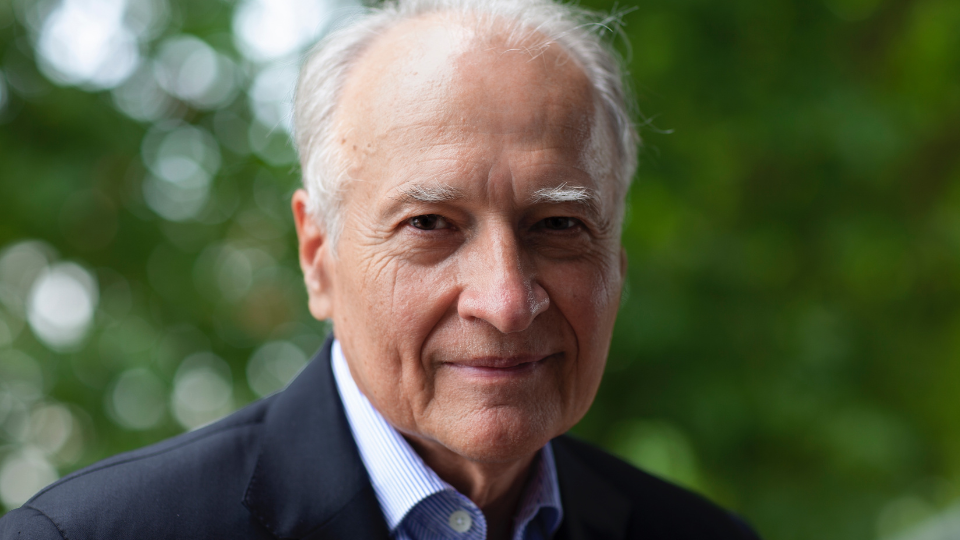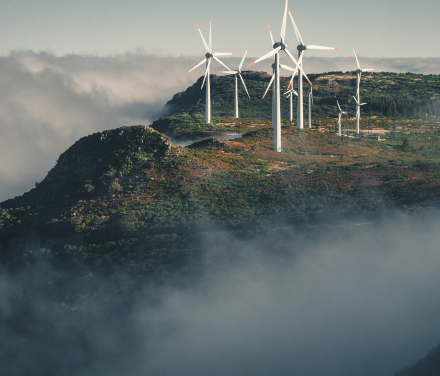This article is from the 2024 yearbook: “Innovation has found its bearings.” We have designed this annuel review to inspire you and spark new vocations in the service of transforming cities and territories. Happy reading!
The energy transition is gathering momentum in public debate. In your opinion, how big is this trend and how does it help us re-examine our current energy systems?
These days it is common knowledge: the energy transition is an absolute necessity. As shown with the COP28 agreement in Dubai, we must urgently reduce our dependence on fossil fuels in favour of low-carbon energy. To contain global heating, mass electrification is required for all sectors that require energy, such as housing, transport and manufacturing, or to a greater or lesser extent, our whole economy, considering that electric power currently holds a minor share of the energy mix for most countries.
Our electrical energy demand is therefore going to be colossal in the years and decades to come, and we do not understand yet the full extent of it. RTE, France’s electricity transmission system operator, regularly re-evaluates upwards its foresight scenarios, understandably with a 2050 forecast horizon where widespread electricity use will have become a reality.
What business prospects does the energy transition represent for VINCI?
With our three main business areas — energy, transport and construction — we have a central position in the energy transition challenge, which constitutes a powerful groundswell for the whole Group. It is both an immense opportunity and a huge responsibility : our expertise in all our business activities means we are meant to be major contributors to the coming decarbonised world. We are thrust into a timeline which has never been so promising and tangible at the same time, because with the climate emergency, the long term becomes an immediate issue with the need to place ourselves as of now on the path towards carbon neutrality by 2050.
Of course, the mass wave of electrification concerns first and foremost our energy business areas, especially at VINCI Energies and Cobra, the two divisions of our Energy branch. We are a global player in this field, present throughout the entire electricity production and transmission chain, since we develop, finance and operate renewable energy production sites, such as the mega-photovoltaic park that we recently opened in Belmonte, Brazil. In doing so, we have gone full circle, showing that the intuition of our founding fathers has incredible relevance. We are renewing VINCI’s original model, which built growth 120 years ago with the then nascent electrical energy value chain, going on to build electricity power plants, and deploy and operate electricity distribution systems under concession contracts — even extending to regional tram and railway networks.

How do things stand for construction and concessions, the other two business areas?
The energy transition is just as promising. In construction, it generates a growing output of civil engineering projects linked not only to energy infrastructure (energy converter stations, interconnecting transnational networks, etc.), but also to transport decarbonisation, with major rail infrastructure construction projects, such as the Grand Paris Express in France and the HS2 high-speed line in the UK, or even giant electric vehicle battery plants. The same goes for our construction and urban development activities in the widest sense, which bring together issues such as energy efficiency and carbon footprint reduction, land take reversion and transforming our lifestyles and the way we work. The city thus regenerates on itself, which gives rise to multiple projects. In transport infrastructure concession contracts, the energy transition is both an existential issue and a powerful lever for upgrading our activities. Decarbonising the road and aviation industries is the necessary condition if we are to continue to get around, to travel, to transport goods and to power our whole economy, bearing in mind that transport needs will continue to grow worldwide. Action is already underway, as we are equipping service areas on our motorways with electric charging stations and making biofuels available for aircraft at all our airports. And tomorrow’s technology is already here, be it on motorways — where we are experimenting with dynamic charging for heavy goods vehicules with conductive and inductive systems, or in the aviation industry — with synthetic fuels and hydrogen or eFuels in the medium term. Everything is in motion to fundamentally transform these infrastructures.
With regards to all these applications, what are the technological and economic challenges in the mass rollout of energy infrastructure?
Attention is currently mainly focused on the needs for decarbonising electrical energy production. In fact, solar and wind projects are increasing in number and in their scope. For example, take the huge electric energy converter platforms linked to offshore wind farms that we are now building in the North Sea, projects that are worth billions of euros. We are currently experiencing a nuclear revival, especially in France, where the construction of six and probably even fourteen new EPRs is planned, meaning there are major projects in the pipeline for us. On the other hand, people perhaps do not realise that for every euro set aside for new decarbonised energy production capacities, almost the same amount will need to be invested in reconfiguring, upgrading and interconnecting electricity transmission and distribution networks. The technical challenge will be to ensure a constant balance between production and consumption, by securing electricity supply, even though these networks will have to integrate an increasing share of intermittent renewable energy sources, and electrical power can only be stored by converting it into another form of energy. As with production, our Energy branch is already in action and will continue to increase their work on these multiple operations on the networks. We also aim to focus on storage, which is an essential issue, whether it concerns pumped energy transfer stations (PETSs), or even hydrogen or battery storage solutions.
All these future investments in energy infrastructure — as elsewhere in the decarbonisation of transport infrastructure — are so important that they cannot rely on public money alone, requiring public-private partnerships. This is already the case for a part of the ultra-high voltage transmission lines that we are installing in Brazil and that we are due to build in Australia soon. The energy transition is certainly revitalising our previous model!
« For every euro set aside for new green energy production capacities, almost the same amount will need to be invested in electricity transmission and distribution networks”
In your opinion, what is Leonard’s role in the dynamic transformation of business areas brought about by this transition?
Leonard already plays an active role in reengineering activities, and we are carrying this out in all our business areas with regard to the new paradigm of the energy and climate transition. The majority of innovative projects incubated by Leonard relate to this theme, and many of them have spawned technological advances that have already been integrated into our practices and our offers, in areas as diverse as energy efficiency in buildings and industrial processes, decarbonising construction materials and processes, and even artificial intelligence applied to road traffic management and airport operations optimisation. For the coming years and decades, there are a huge number of areas for which the scope needs to be defined, commensurate with the ground that remains to be covered to collectively achieve net zero by 2050. Our business areas are a fantastic playground for innovators. We need them, and at VINCI they are guaranteed to find an entrepreneurial culture that will enhance their creativity.



